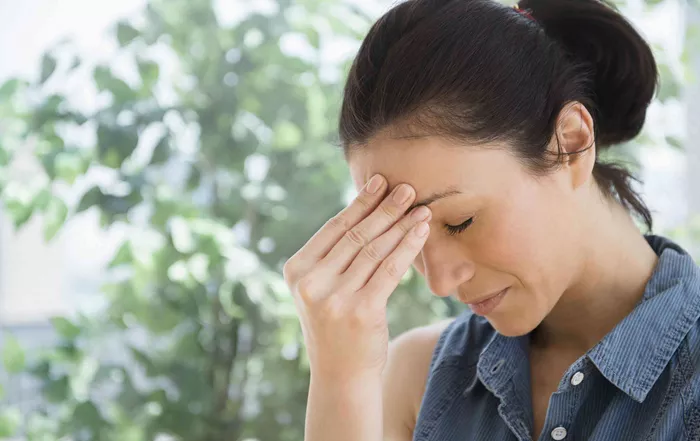Many people experience headaches when they feel anxious or stressed. These are called anxiety headaches. They can feel like a tight band around your head or a dull, constant ache. Understanding what causes these headaches can help you manage them better.
What Are Anxiety Headaches?
Anxiety headaches are often tension-type headaches. They occur when stress and anxiety cause the muscles in your neck and scalp to tense up. This muscle tension leads to pain and discomfort in your head.
Common Symptoms
- A dull, aching head pain
- Sensation of tightness or pressure across the forehead or on the sides and back of the head
- Tenderness on the scalp, neck, and shoulder muscles
Why Do They Happen?
When you’re anxious, your body goes into “fight or flight” mode. This response causes physical changes, like muscle tension and increased heart rate, which can lead to headaches. Daily stressors, such as work pressure or personal issues, can also contribute to the development of anxiety headaches.
Recognizing the Connection Between Anxiety and Headaches
It’s important to understand how anxiety and headaches are connected. Recognizing this link can help you take steps to prevent and manage your symptoms.
Stress as a Trigger
Stress is a common trigger for tension-type headaches and migraines. Everyday stressors, like traffic jams or tight deadlines, can lead to muscle tension and headache pain. Managing stress effectively can reduce the frequency and severity of these headaches.
Physical Responses to Anxiety
Anxiety can cause various physical symptoms, including:
- Muscle tension
- Increased heart rate
- Rapid breathing
- Fatigue
These physical responses can contribute to the development of headaches.
Assessing Your Anxiety Levels
Understanding your anxiety levels can help you manage your symptoms more effectively. Several tools can help assess the severity of your anxiety.
Generalized Anxiety Disorder 7 (GAD-7)
The GAD-7 is a self-administered questionnaire used to screen for and assess the severity of generalized anxiety disorder. It consists of seven items, each scored from 0 (not at all) to 3 (nearly every day). The total score ranges from 0 to 21, with higher scores indicating more severe anxiety.
Beck Anxiety Inventory (BAI)
The BAI is a 21-item self-report inventory that measures the severity of anxiety in adults and adolescents. Each item is rated on a scale from 0 (not at all) to 3 (severely). The total score helps determine the level of anxiety, ranging from minimal to severe.
State-Trait Anxiety Inventory (STAI)
The STAI assesses two types of anxiety: state anxiety (temporary condition) and trait anxiety (general tendency). It consists of 40 self-report items rated on a 4-point scale. Higher scores indicate higher levels of anxiety.
Professional Recommendations for Managing Anxiety Headaches
Managing anxiety headaches involves addressing both the physical pain and the underlying anxiety. Here are some professional recommendations:
Relaxation Techniques
Practicing relaxation techniques can help reduce muscle tension and alleviate headache pain. Some effective methods include:
- Deep breathing exercises
- Progressive muscle relaxation
- Meditation
- Yoga
- Spending time with supportive people
These techniques can lower cortisol levels, improve mood, and reduce the frequency of headaches.
Cognitive Behavioral Therapy (CBT)
CBT is a form of psychotherapy that helps individuals identify and change negative thought patterns. It has been effective in managing anxiety and reducing the occurrence of anxiety-related headaches.
Medication
In some cases, medication may be necessary to manage anxiety and prevent headaches. Options include:
- Antidepressants
- Anti-anxiety medications
- Over-the-counter pain relievers
Consult with a healthcare professional to determine the best treatment plan for you.
Lifestyle Changes
Incorporating healthy habits into your daily routine can help manage anxiety and reduce headaches:
- Regular exercise
- Balanced diet rich in fruits, vegetables, and whole grains
- Adequate sleep
- Limiting caffeine and alcohol intake
- Maintaining a consistent sleep schedule
When to Seek Medical Attention
While anxiety headaches are common, certain symptoms may indicate a more serious condition. Seek immediate medical attention if you experience:
- Sudden, severe headache
- Headache accompanied by fever, stiff neck, rash, confusion, or seizures
- Headache following a head injury
- Persistent headaches that worsen despite treatment
Conclusion
Dealing with anxiety headaches involves understanding the connection between stress and physical symptoms. By assessing your anxiety levels, practicing relaxation techniques, seeking professional help, and making lifestyle changes, you can manage your symptoms effectively. Remember, it’s important to consult with a healthcare professional to develop a treatment plan tailored to your needs.
For more information on managing stress and anxiety, visit the Mayo Clinic’s guide on stress and headaches.
Related topics:
- How to Support Someone with Anxiety?
- How To Deal With Stress & Anxiety & Depression?
- How Much Theanine For Anxiety?


